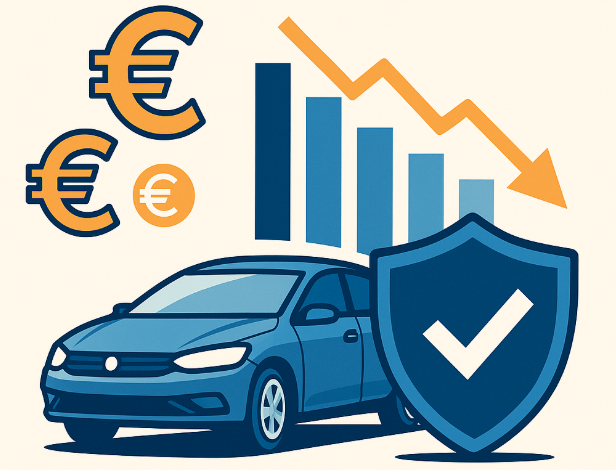A COMPLETE GUIDE TO MASTERING YOUR AUTO INSURANCE COSTS IN 2025

1. Introduction
Auto insurance premiums have been rising steadily in recent years due to inflation, increasing repair costs, and the frequency of litigation. For many drivers, navigating offers, decoding coverage, and negotiating a favorable rate can feel overwhelming. However, by understanding the factors influencing your premium and applying structured strategies, it is possible to reduce your annual bill without sacrificing protection.
In this guide, we cover:
- The key pricing criteria used by insurers
- Must-have discounts and how to stack them
- Simple and advanced tips for optimizing your profile
- Industry trends and innovations that could benefit you
- A 7-step action plan for next year
By the end of this article, you’ll have the knowledge and tips necessary to negotiate a tailored contract that aligns with your budget and driving habits.
2. Key Factors Determining Your Premium
Insurance companies assess risk by combining several data points. Here are the most influential:
- Driver Profile
- Age, years of driving experience, and history (accidents, traffic violations)
- Defensive driving course or additional training
- Insured Vehicle
- New car value, market value, and average repair cost
- Safety features (ABS, airbags, electronic assistance)
- Theft rates and claim history for the model
- Vehicle Usage
- Annual mileage (commute vs. leisure)
- Parking (private garage, shared parking, street)
- Financial Profile
- Insurance score (based on payment and credit history)
- Geographic Location
- Claims and theft statistics by department or city
Did you know: Increasing your deductible from $200 to $500 can reduce collision premiums by 10–20%, as long as you have emergency savings available.
See also: How Active Release Techniques Work to Relieve Pain and Improve Mobility
3. Must-Have and Stackable Discounts
The key to optimizing your premium often lies in stacking multiple discounts. The table below summarizes the most common discounts and their typical savings:
| Discount Type | Eligibility Conditions | Estimated Savings |
| Safe Driver | No accidents or violations in 3–5 years | 10–20% |
| Multi-Policy (Bundle) | Auto + home/renters or multi-vehicle | 5–15% |
| Low Mileage | < 10,000 miles/year | 5–10% |
| Safety Features | ABS, airbags, braking assistance | 2–10% |
| Telematics / Pay-Per-Drive | Monitoring behavior via app/device | 5–30% |
| Good Student | Full-time student with B+ average | 5–15% |
| Online Billing / E-Billing | Electronic documents & payments | 1–3% |
Practical Tips
- Annual Check: Insurers update their programs regularly, so check each year.
- Keep Proof Handy: Defensive driving certificates, student records.
- Direct Inquiry: Ask your agent about “hidden” discounts for good profiles.
For insights into how auto insurance payments via checking accounts may shape the future of insurance costs, check out this article on the future of auto insurance payments via checking accounts.
This resource offers a forward-looking view of payment mechanisms that could transform your monthly costs.
4. Advanced Strategies to Take It Further
If you’ve already applied the basic discounts, here are additional strategies to consider:
- Pay-in-Full Credit: Save 3–7% by paying the entire annual premium upfront.
- Affiliation Programs: Access preferential rates through professional associations, mutuals, or auto clubs.
- Proactive Negotiation: Contact your insurer with your improved driving stats.
- Coverage Audit: Remove underutilized options (e.g., zero-mile assistance, rental car) to cut the bill.
- Mutual Insurers: Some companies distribute premium surpluses as dividends.
- Claims Profile Evaluation: Regularly check your claim records for possible errors.
Pro Tip: A clean payment history (no claims, no late payments) remains your strongest negotiation lever.
5. Industry Trends and Innovations
The auto insurance ecosystem is evolving due to several trends:
- Repair Cost Inflation
- High-tech parts and ADAS recalibration: +20% average bill increase in five years.
- Supply Chain Disruptions
- Component shortages and rising labor costs.
- Litigation and Payouts
- Increased litigation frequency and larger bodily injury claims add 10–15% to liability premiums.
- Extreme Weather Events
- Floods, storms, and fires lead to higher claims in comprehensive coverage.
- Digitalization
- Fully mobile management, chatbots, and real-time damage assessments: saving time and dynamically adjusting rates.
To learn more about how no-down-payment car insurance works and how to save on your policy, read this article on how no-down-payment car insurance works and tips to save on your policy.
6. 7-Step Action Plan
- Audit Your Current Policy: Mileage, coverage, and options included.
- Compare 3+ Quotes Annually.
- Stack Discounts: Safe driver, bundle, safety features.
- Increase Deductibles Responsibly (avoid overburdening your emergency budget).
- Test Telematics or Pay-Per-Mile if you drive less than 10,000 miles/year.
- Improve Your Financial Profile: Monitor and boost your credit score.
- Negotiate Pay-in-Full, Affiliation Programs, and Unlisted Discounts.
7. Conclusion
Mastering your auto insurance costs in 2025 requires both a technical and strategic approach:
- In-depth analysis of your profile and coverage
- Methodical stacking of discounts
- Openness to new payment models and alternative insurers
By applying this guide and staying informed annually, you can save hundreds of dollars per year. Also, consider optimizing your other contracts (home, mobile, etc.) since a holistic view strengthens your negotiating power. For tips on evaluating mobile home insurance coverage, check out this dedicated article: tips on evaluating mobile home insurance coverage.
Take action today: a simple audit or renegotiation can transform your auto budget for the next 12 months!

